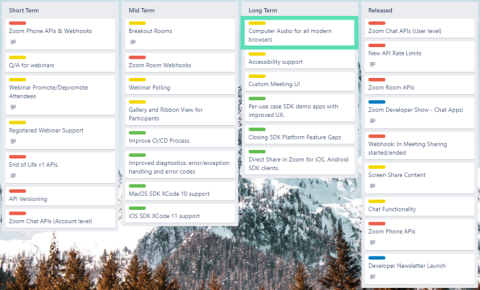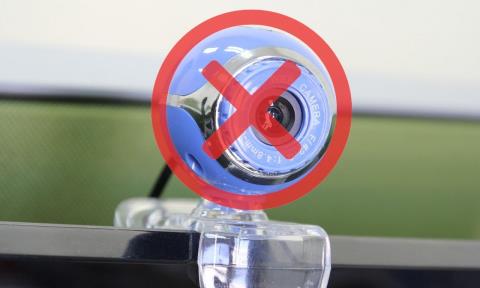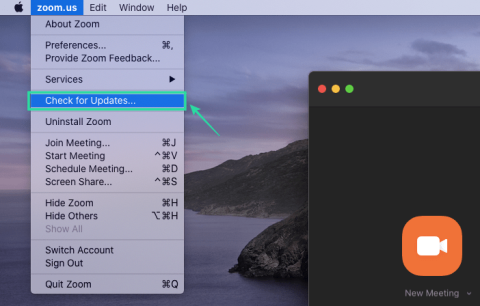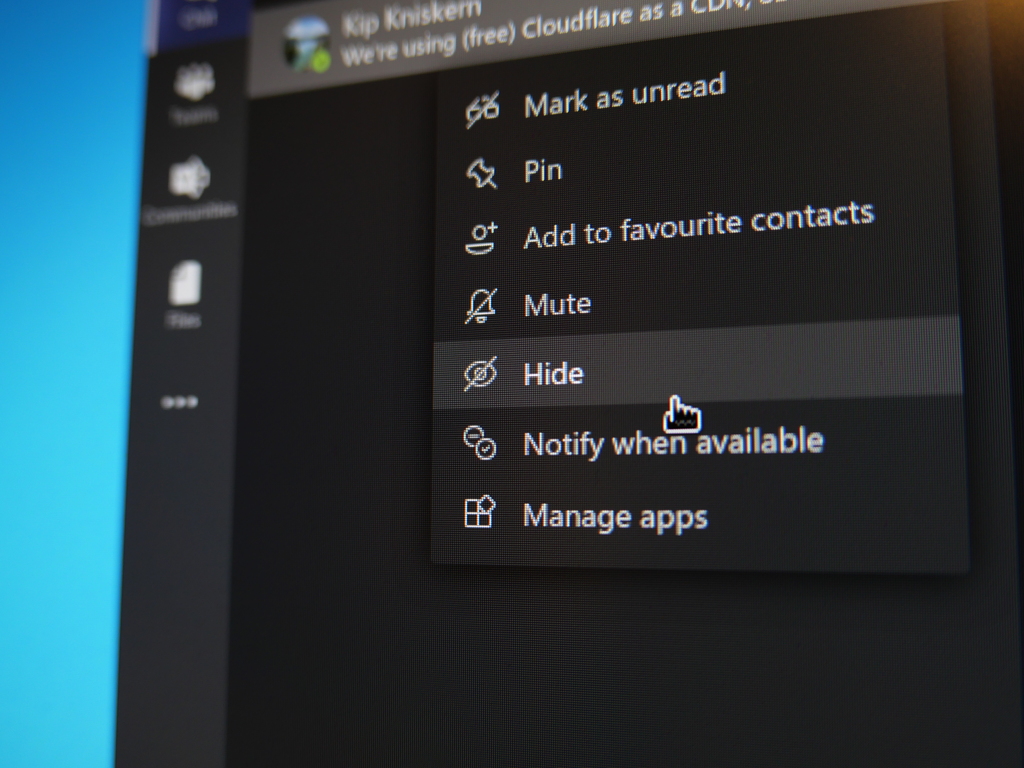Google Meet ist das neue Tool für die Remote-Zusammenarbeit in der Stadt, das Video- und Audiokonferenzfunktionen zusammen mit überzeugenden Funktionen wie End-to-End-Verschlüsselung, HD-Audio, HD-Video und vielem mehr bietet. Google Meet ist während der Pandemie völlig kostenlos, was bedeutet, dass es bereits von vielen Organisationen und Nutzern, einschließlich Lehrern , auf der ganzen Welt verwendet wird.
Wenn Sie neu bei Google Meet sind und Probleme mit Ihrem Mikrofon haben, sind Sie nicht allein. Viele Benutzer haben berichtet, dass sie ihre Mikrofone aus verschiedenen Gründen nicht verwenden können, und wir haben eine Liste mit einigen der häufigsten Fehlerbehebungen zusammengestellt, mit denen Sie Ihr Problem lösen können. Werfen wir einen Blick auf sie.
Verwandte: So ändern Sie Ihren Namen in Google Meet auf iPhone, Android und PC
Inhalt
Stellen Sie sicher, dass das Mikrofon nicht stummgeschaltet ist

Manchmal kann es sich um ein ganz einfaches Problem handeln. Möglicherweise werden Sie während eines Google Meet-Meetings einfach stumm geschaltet und wissen nichts davon. Überprüfen Sie das Mikrofonsymbol unten auf Ihrem Bildschirm in der Anrufleiste. Wenn es rot ist, sind Sie bei Google Meet stummgeschaltet. Klicken Sie einfach auf das Symbol, um die Stummschaltung aufzuheben. Dadurch können Ihre Meeting-Mitglieder Sie laut und deutlich hören.
Überprüfen Sie Ihre Hardwareverbindung, wenn Sie ein externes Mikrofon haben
Wenn Sie ein externes Mikrofon verwenden, sei es an Ihrem Headset angeschlossen oder separat, sollten Sie zuerst die physischen Verbindungen des Headsets/Mikrofons zu Ihrem System überprüfen. Beginnen Sie damit, den Draht auf Schnitte oder ungewöhnliche Biegungen zu überprüfen. Alle Unebenheiten im Kabel können auch auf interne Biegungen im Kabel hinweisen, die das Mikrofon beschädigen und seine ordnungsgemäße Funktion beeinträchtigen können.
Wenn alles normal erscheint, versuchen Sie, das Headset/Mikrofon von Ihrem System zu trennen und dann erneut anzuschließen. Dadurch wird nicht nur die Verbindung am Ende Ihres Systems zurückgesetzt, sondern auch alle Hardware-Konnektivitätsprobleme beseitigt, die möglicherweise die ordnungsgemäße Funktion Ihres Mikrofons beeinträchtigen.
Verwandte: So blockieren Sie anonyme Benutzer bei Google Meet
Stellen Sie sicher, dass das Eingabegerät in Google Chrome ausgewählt ist
Chrome bietet auch die Möglichkeit, auszuwählen, welches Mikrofon für die Audioeingabe an verschiedene Geräte verwendet wird. Wenn bei Google Meet Mikrofonprobleme auftreten, ist es wahrscheinlich, dass in Chrome nicht der richtige Mikrofoneingang ausgewählt wurde. Sie können Ihr gewünschtes Eingabegerät auswählen, indem Sie der folgenden Anleitung folgen.
Öffnen Sie Chrome, klicken Sie auf das Menüsymbol mit den drei Punkten in der oberen rechten Ecke des Browsers.

Wählen Sie „ Einstellungen “.

Wählen Sie nun in der linken Seitenleiste „ Datenschutz und Sicherheit “ aus.

Wählen Sie „ Site-Einstellungen “.

Klicken Sie nun auf dem nächsten Bildschirm auf „ Mikrofon “.

Wenn der Schalter oben ausgegraut ist und daneben " Blockiert " steht, schalten Sie den Schalter ein, um sicherzustellen, dass dort " Vor dem Zugriff fragen (empfohlen) " steht.

Klicken Sie nun oben auf das Dropdown-Menü und wählen Sie das gewünschte Mikrofon aus, das Sie in Google Meet verwenden möchten.

Schließen Sie die Registerkarte „ Einstellungen “, um Ihre Einstellungen zu speichern.
Sie können Ihr ausgewähltes Mikrofon jetzt während Google Meet-Meetings verwenden, wodurch Ihr Mikrofonproblem behoben sein sollte.
Verwandte: Google Meet Virtueller Hintergrund: Neueste Nachrichten, Chrome-Erweiterung und alles, was wir bisher wissen
Stellen Sie sicher, dass der Mikrofonzugriff erlaubt ist (Windows und Mac)
Wenn Sie Ihr Mikrofon in Google Meet immer noch nicht verwenden können, besteht die Möglichkeit, dass Chrome oder der von Ihnen verwendete Browser der Mikrofonzugriff verweigert wurde.
Unter Windows
Windows hat eine neue Funktion eingeführt, um die Apps zu steuern, die Ihr Mikrofon verwenden, um die Datenschutzoptionen zu erhöhen. Wenn Sie in Google Meet kein Mikrofon verwenden können, sollten Sie Ihre Mikrofonberechtigungen in Windows überprüfen. Schauen wir uns an, wie Sie dies tun können.
Öffnen Sie Ihr Startmenü, indem Sie auf das Startsymbol in der unteren linken Ecke klicken und geben Sie " Mikrofon-Datenschutzeinstellungen " ein und suchen Sie nach . Klicken Sie auf die erste Einstellungsoption, die auf dem Bildschirm erscheint.

Stellen Sie sicher, dass der Schalter oben für " Apps Zugriff auf Ihr Mikrofon zulassen " auf Ihrem Gerät aktiviert ist. Wenn nicht, schalten Sie den Schalter ein, um ihn zu aktivieren.

Hinweis: Suchen Sie unter " Wählen Sie, welche Apps auf Ihr Mikrofon zugreifen können " nach Chrome und stellen Sie sicher, dass der Schalter daneben aktiviert ist. Wenn nicht, schalten Sie es ein, indem Sie einfach darauf klicken.
Auf dem Mac
Wie bei Windows müssen Sie einer App/einem Browser die Berechtigung erteilen, Ihr Mikrofon zu verwenden. Sie können auf die Mikrofonberechtigungen zugreifen, indem Sie zuerst die App "Systemeinstellungen" auf Ihrem Mac öffnen, indem Sie entweder auf die App im Dock klicken oder auf das Apple-Symbol in der Menüleiste klicken und dann "Systemeinstellungen" auswählen.

Wählen Sie in den Systemeinstellungen die Option Sicherheit und Datenschutz aus.

Wenn das Sperrsymbol in der unteren linken Ecke gesperrt ist, müssen Sie es entsperren, um Änderungen an Ihren Berechtigungen vorzunehmen. Klicken Sie dazu auf das Schloss-Symbol und geben Sie das Passwort/PIN Ihres Macs ein.

Wählen Sie oben die Registerkarte Datenschutz und klicken Sie dann in der linken Seitenleiste auf die Option Mikrofon.

Aktivieren Sie das Kontrollkästchen neben der Browseranwendung, für die Sie das Mikrofon aktivieren möchten. Beenden Sie danach den Browser und starten Sie ihn erneut.
Sie sollten Ihr Mikrofon jetzt während Besprechungen in Google Meet problemlos verwenden können.
Überprüfen Sie die Mikrofonlautstärke (Windows & Mac)
Sowohl Windows als auch macOS ermöglichen es Benutzern, einen Lautstärkepegel für die Mikrofone ihres Systems einzustellen, genau wie bei ihren Audioausgabegeräten. Wenn Ihre Mikrofonlautstärke niedrig ist, können andere in einem Google Meet-Anruf Sie nicht richtig hören. Es wird daher empfohlen, in einer solchen Situation die Lautstärke Ihres Mikrofons zu überprüfen.
Unter Windows
Sie können Ihre Mikrofonpegel unter Windows 10 überprüfen, indem Sie die Systemsteuerung auf Ihrem Computer über das Startmenü öffnen.

Gehen Sie in der Systemsteuerung in der linken Seitenleiste zu „Hardware und Sound“ und wählen Sie im rechten Bedienfeld die Option „Sound“.

Wenn das Soundfenster erscheint, wählen Sie oben die Registerkarte „Aufnahme“. Hier sehen Sie eine Liste aller Eingabegeräte, die an Ihr System angeschlossen sind.
Wählen Sie auf der Registerkarte Aufnahme das Mikrofon aus, das Sie für Google Meet-Anrufe verwenden, und klicken Sie dann unten in diesem Fenster auf die Schaltfläche "Eigenschaften".

Wenn das Fenster Mikrofoneigenschaften auf dem Bildschirm angezeigt wird, klicken Sie oben auf die Registerkarte „Pegel“.
Unter dieser Registerkarte sollten Sie im Abschnitt "Mikrofon" einen Schieberegler sehen. Ziehen Sie diesen Schieberegler nach rechts, je nachdem, wie hoch die Mikrofonempfindlichkeit sein soll. Je weiter Sie den Mikrofon-Schieberegler nach rechts ziehen, desto höher wird die Lautstärke Ihres Mikrofons und dies sollte anderen helfen, Ihnen bei Google Meet besser zuzuhören.

Nachdem Sie die erforderlichen Änderungen vorgenommen haben, klicken Sie auf die Schaltfläche 'Übernehmen' und dann auf 'OK', um dies zu bestätigen. Starten Sie einen Anruf in Google Meet bzw. nehmen Sie daran teil, um zu sehen, ob Ihr Mikrofon ordnungsgemäß funktioniert.
auf dem Mac
Um die Mikrofonlautstärke auf dem Mac zu überprüfen, können Sie die „Systemeinstellungen“ über die Menüleiste, das Dock oder das Launchpad öffnen.

Klicken Sie in den Systemeinstellungen auf die Kachel „Sound“.

Wenn der Sound-Bildschirm geladen wird, klicken Sie oben auf die Registerkarte "Eingabe", wählen Sie das Mikrofon aus, das Sie für Google Meet-Anrufe verwenden, und ziehen Sie den Schieberegler "Eingabelautstärke" nach rechts, um die Lautstärke zu erhöhen.

Stellen Sie sicher, dass die Lautstärke angemessen ist, indem Sie etwas sprechen und dann überprüfen, ob Ihre Stimme auf der Anzeige „Eingangspegel“ auf demselben Bildschirm zu hören ist.
Starten Sie Google Chrome neu
Ein einfacher Neustart Ihres Browsers kann auch Mikrofonprobleme beheben. Dadurch können Sie den Cache leeren, Erweiterungen im Hintergrund neu starten und vor allem zusätzlichen Speicherplatz freigeben, der Probleme mit Ihrem Mikrofon verursachen könnte. Während der Neustart die App möglicherweise einfach schließt und erneut öffnet, werden nicht immer alle Hintergrundprozesse und Erweiterungen entfernt, die für Chrome ausgeführt werden.

Um Ihren Browser richtig neu zu starten, öffnen Sie einen neuen Tab und geben Sie ' chrome://restart ' in Ihre URL-Leiste ein. Dadurch wird Chrome vollständig neu gestartet, wodurch widersprüchliche Hintergrundprozesse beseitigt werden sollten, die die Funktion Ihres Mikrofons beeinträchtigen könnten.
Verwandte: So entfernen Sie den Meet-Tab vollständig aus Gmail
Starten Sie Ihr System neu
If restarting your browser does not help solve your microphone issues then you can try restarting your system. This will get rid of your system’s cache files and background processes that might be interfering with the functioning of your microphone. It will also release charge from the capacitors of your system which should take care of any conflicting electronics that might be preventing your microphone from working (only external mics).
If you have an external microphone, then turn off your system, wait for 20 seconds and then start your system again. If you have an in-built microphone or a headset then simply use the restart command from your Power Menu.
Restart your Microphone using CLI (Mac only)
Mac systems use an integrated optimization system that helps microphones work seamlessly across different devices. If you are unable to use your microphone on your Mac then you can try restarting the microphone using CLI. Use the guide below to restart your microphone.
Note: You will need administrator privileges to complete this process.
On your Mac system, open the Application folder in your Launchpad, select ‘Utilities’ and launch ‘Terminal’. You can also open the Terminal app from the Launchpad or Spotlight.

Enter the following command in Terminal:
sudo killall coreaudiod
… and hit Enter to execute it.

Now enter your credentials in the dialog box to restart the service and press Enter.
You should try joining your meeting on Google Meet again and your microphone issues should now be resolved.
Troubleshoot your Microphone on Windows
If something goes wrong with your computer’s microphone, Windows will be able to tell what might be the issue you’re facing and might even fix it for you, if possible. This is done using the native Troubleshoot tool that’s available on Windows 10 which you can use to solve problems related to your computer’s microphone.
For this, open the Windows Settings app from the Start menu or Action Center.
Inside Windows Settings, go to System and click on the ‘Sound’ tab from the left sidebar.
On this screen, click on the ‘Troubleshoot’ button under the ‘Test your microphone’ section.

If there’s a problem with your microphone, the tool should be able to detect it and you can then follow the on-screen instructions to get it resolved.
Restart Windows Audio Service
If you have a Windows PC, you can try restarting the Windows audio service to fix the microphone issues that you are facing in Google Meet. Follow the guide below to help you get started.
Press the key combination ‘Windows+R’ on your keyboard simultaneously. This should bring up your ‘Run’ dialog box.

Now type ‘services.msc’ in the Run dialog box and hit Enter on your keyboard to execute the command. This will open the services window on your PC.

Now find ‘Windows Audio‘ in the list.

Right-click on the service and click on ‘Properties’ from the sub-menu that appears.

Click on ‘Stop’. This will stop the service.

Once stopped, wait for a few seconds and then click on ‘Start‘ again.

My OEM add-ons restart the service automatically which can be the case for you.
Note: In the properties window, under the ‘General’ tab, click on the drop-down menu beside the ‘Startup Type’ option and select ‘Automatic’ if not selected. Click on ‘Apply’ in the bottom right corner to apply your changes.

Restart your system.
The Windows audio service will now be automatically restarted on your system’s next bootup which should solve any microphone issues that you were having with Google Meet.
Switch to a Wired Headset
If you are using a Bluetooth headset with an in-built microphone then chances are that Meet services are conflicting with the wireless tech required for your headset to function properly. This is a known issue and many people trying to use a Bluetooth headset with Google Meet around the world are facing the same issue.
Google is expected to fix the issue with future updates, but for now, the only workaround seems to be to use a wired headset with an in-built microphone or to use an external microphone. This will solve all your audio issues with Google Meet and allow you to use the microphone properly.
Free Up System Memory
Real-time audio streaming and input require a decent amount of memory and processing power. If you are on a low-powered system and intermittently face microphone issues now and then, it could be there is not enough free memory for the microphone to work properly with Google Meet.
Google Chrome also uses a significant amount of your RAM and processing power which could also be interfering with your Google Meet experience. To fix these issues, you should start by closing any background applications that could be using the resources of your system.
You should also close any background tabs in Chrome other than Google Meet. This should solve your microphone issues with Google Meet.
Ensure that your Microphone is selected in Windows Settings
Windows also give you the ability to select your default microphone. If a different microphone has been selected in Windows audio settings than the one that you wish to use with Google Meet then it could be conflicting with the background services which could be the cause of your microphone issues. Follow the simple guide below to select your desired microphone as your default audio input device.
Open the Control Panel.

Click on the ‘Hardware and Sound’ category and select ‘Sound’ to open up your sound settings.

Now select the ‘Recording’ tab at the top.

You will now be able to see a list of all the audio input devices connected to your system. Select the microphone that you want to use as your default audio input device and right-click on it.

Select ‘Set as default communication device’ from the submenu that appears to start using that microphone as your default audio input device.

Once done, click on ‘Ok’ at the bottom right corner and close the window.
Your microphone should now be able to work without any issues during meetings on Google Meet.
Update your Microphone drivers (Windows only)
Sometimes your microphone drivers on your Windows system could be outdated which might be preventing your microphone to work properly in Google Meet. You should try to update your microphone drivers to fix these issues. Follow the guide below to help you easily update or reinstall your microphone drivers on Windows 10.
Type ‘Device Manager’ in your taskbar search bar and open the first application that shows up in the search results with the same name.

Now click on the drop-down menu beside ‘Audio Inputs and outputs’

Select the microphone that you wish to use with Google Meet.

Right-click on the microphone and select ‘Properties’.
Now click on the ‘Driver’ tab at the top to open up driver options for your device. Now if the option for ‘Update Driver’ is not greyed out, click on it to update the drivers for your device.

Your microphone drivers will now be updated and you should now be able to use the concerned microphone with Google Meet. Although most microphones are plug-and-play in today’s day and age, this could still help solve your issue depending on your microphone.
Disable Audio Enhancements
There is an option to enable audio enhancements for the microphone on Windows. While this helps improve audio quality for your microphone, this setting is known to interfere with the functioning of Microsoft Meet.
If you are having issues with your microphone, then chances are that audio enhancements have been enabled for your microphone in Windows. Follow the guide below to help you disable audio enhancements for your microphone.
Open the control panel on your Windows PC, click on ‘Hardware and Sound’, and select Sound. This will open the sound settings for your Windows system.

Click on the ‘Recording’ tab at the top of your screen, select the microphone you wish to use during Google Meet meetings from the list, right-click on it, and select ‘Properties’.

Now in the Microphone Properties window, select the ‘Advanced’ tab from the list at the top. Under the ‘Single Enhancements’ option, uncheck the box beside ‘Enable audio enhancements’.

Audio enhancements will now be disabled for the microphone in question. You should now be able to use your microphone during Google Meet meetings.
Clear Google Chrome’s Cache
You can try to clear the cache on Google Chrome to fix your microphone settings. This will get rid of any stored temporary files that might be interfering with the Google Meet extension. Follow the guide below to clear the cache on Google Chrome.
Open Google Chrome, click on the ‘3-dot’ menu icon in the top right corner.

Select ‘More Tools’.
Now select ‘Clear browsing data’.

In the next window, select ‘All-time’ in the time range drop-down menu.

Uncheck the box for ‘Browsing History‘.

Lastly, click on ‘Clear data’ to clear all the cache files.

Your cache files will now be cleared and you should now be able to use the microphone in Google Meet.
Close FaceTime from the background
Many users on Mac systems have reported Facetime interfering with Google Meet which causes the microphone to malfunction. If you use Facetime regularly then you should try closing the application in the background before joining a meeting in Google Meet. This should help solve any audio input issues that you were facing with the Google Meet extension.
Sign OUT, then back IN into your Google account
Some users having issues with microphones in Google Meet have reported that signing out of your Google account and signing in again has helped solve this issue. You can try this method to see if it fixes your issue.
To sign out, simply click on your profile icon in the top right corner of your browser and click on Sign out. Simply sign in to your account again now and try to join a meeting on Google Meet. You should now be able to use your microphone during Google Meet meetings.
Disable Experimental Flags on Google Chrome
If you have enabled any experimental flags in Google Chrome then chances are that they are preventing your microphone from working properly in Google Chrome. You should disable any experimental flags and try to use your microphone again.
Simply type ‘chrome://flags’ in your URL bar and hit enter to access the flags page. Now scroll through the options and disable any enabled tabs by click on the drop-down menu beside it and select ‘Disable’.
Update Google Chrome
Google Meet and its corresponding extension for Chrome was recently given a new overhaul by Google chrome to support the recent influx of users. If you are using an older version of Google Chrome then chances are that it is incompatible with the latest version of Google Meet and the Google Meet extension.
Download the latest stable build of Google Chrome from this link and install it on your system. You should then be able to use your microphone in Google Meet without any issues.
Manually Update Google Meet extension
If nothing seems to work, you can try updating your Google Chrome extensions manually. Simply follow the guide below to help you get started.
Open Google Chrome on your system and type ‘chrome://extensions’ in your URL bar and hit Enter.

The extensions settings page will now open up. In the top right corner, turn on the toggle for ‘Developer Mode’.

Now simply click on ‘Update’ and chrome will manually update all the extensions installed on your system including Google Meet.

You should now be able to use the microphone freely in Google Meet without any persistent issues.
We hope these fixes helped you solve your microphone issues with Google Meet. If you have any suggestions for us, feel free to get in touch with us using the comments section below.
RELATED:
Warum werden einige Töne in Windows reduziert?
Wenn Sie an einer Besprechung teilnehmen, reduziert Windows Geräusche aus anderen Quellen. Das liegt nicht an Meet, sondern an einer Windows-Funktion.
Andere Teilnehmer können meinen Screenreader, meinen Musikplayer oder andere Anwendungen hören
Abhängig von Ihrem Betriebssystem und Audiogerät können Geräusche, die von anderen Browser-Registerkarten oder Anwendungen kommen, von anderen Teilnehmern gehört werden. Um zu vermeiden, dass andere Geräusche vom Mikrofon aufgenommen werden, verwenden Sie Kopfhörer.




















































![So umgehen Sie den verbotenen Zoom 403-Fehler [Update: Zoom hat das Problem behoben] So umgehen Sie den verbotenen Zoom 403-Fehler [Update: Zoom hat das Problem behoben]](https://cloudo3.com/resources8/images31/image-2646-0105182808274.png)









![So deaktivieren Sie Benachrichtigungen in Microsoft Teams [AIO] So deaktivieren Sie Benachrichtigungen in Microsoft Teams [AIO]](https://cloudo3.com/resources8/images31/image-2249-0105182830838.png)





![Bedingte Formatierung basierend auf einer anderen Zelle [Google Tabellen] Bedingte Formatierung basierend auf einer anderen Zelle [Google Tabellen]](https://cloudo3.com/resources3/images10/image-235-1009001311315.jpg)